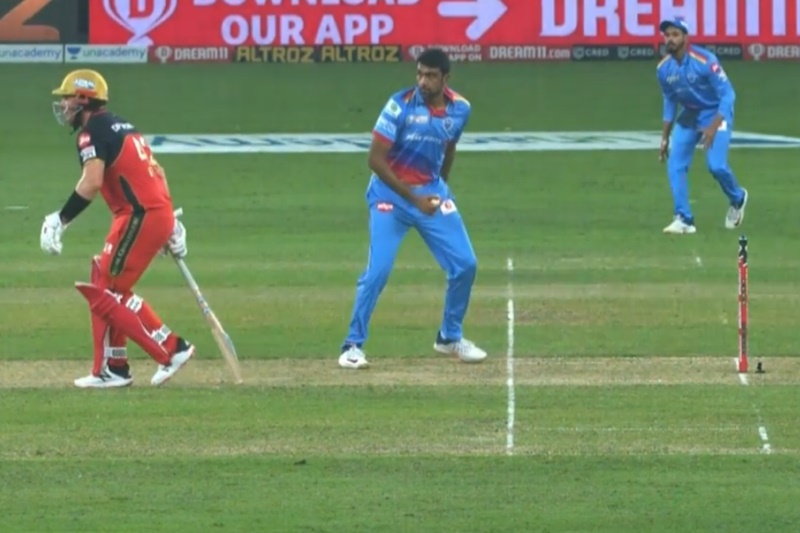The exact location of ‘The Line‘ is extremely easy to identify if you’re an Australian cricketer. Everybody else needs a bit of a steer. Fortunately, we are here to help you out. Welcome to Linewatch.
As we all know, the Australian cricket team is responsible for dictating the location of the elusive and mysterious Line separating acceptable from unacceptable on the field of play.
“We know what’s right and what’s wrong, so it’s pretty simple,” says Tim Paine.
Maybe to you, mate.
Mistakes are often made. In March 2017, Virat Kohli accused Steve Smith of crossing The Line by looking to the dressing room for help when deciding whether to review a decision or not.
Virat was apparently blissfully unaware that the Australians are the custodians of The Line and that The Line is sacred to them.
Back then, we believed that the Australia captain had final say on the exact location of the line. It now transpires that governance of the line may be more complex than we realised.
Ricky Ponting, R Ashwin and the mankad
The mankad is not a difficult thing to get your head around. It is one of the necessary checks and balances that keeps batsmen from taking the piss. It is the community policing itself because even minor crimes need a deterrent.
R Ashwin famously agrees. His coach at Delhi Capitals, Ricky Ponting, disagrees – he thinks that a mankad, “isn’t a good look”.
Ponting doesn’t like batsmen stealing ground either and agrees there needs to be some sort of deterrent but apparently the current mankad deterrent isn’t to his taste. He’s suggested penalty runs.
Penalty runs is potentially another way of going about things, but currently that isn’t a thing. The only way to deter a non-striking batsmen from striding confidently down the pitch at the minute is by being a person willing to mankad them.
What’s interesting to us is that the tension between Ashwin’s position and Ponting’s position on this matter has exciting implications for The Line.
In short, if Ponting could bully mankad poster boy Ashwin into not-mankadding then it would be obvious that he still holds some sort of sway over where The Line is drawn, despite no longer being Australia captain.
Well, people. This is what happened.



Thank God he’s cleared that up. Otherwise we’d have to rely on the ‘rules of the game’ and then where would we be!?
Are the Australians also the sole owners of the sand paper trick as well as the line?
They seem pretty possessive
That incident reinforces exactly why we need Linewatch.
The Line is in different places at different times. Back then sandpaper was classed as merely “butting up against the line” but let’s say the West Indies or someone tried it now. It would definitely be considered “crossing The Line”.
It’s such a fluid, nuanced thing. This is why we need the Australia cricket team: to explain these finer points to us.
I think the simplest solution is to simply count any runs, where the non-striker has left the crease before the ball is released, as short runs. The batsmen can still cross over, but get no runs. If you want to really put an end to it completely, make it so that the 5th time it happens in a single innings, the batting team loses 5 runs. After that, every second time it happens, the batting team loses 5 runs.
Or simply interpret rule 41.17 a bit more aggressively and enforce it every game.
As for Ponting…. : goes off to look for the video of Harmison landing one on Ponting’s helmet :
I think your “run short” solution is elegant and proportionate. No one will steal an advantage if there is no advantage to be stolen. I suspect it is only really enforceable in games with TV umpires who could do it along with the no balls and changing the laws (not rules Balladeer, I expected better of you!) for those small minority of games and inflicting it on village cricketers can be problematic.
There is no elegant and proportionate solution to Australian cricketers though.
A much simpler solution could be to award no ball only if batsman is behind bowler(or the line) at time of delivery
I quite like the simplicity of that no ball idea since it would involve changing very little else, and would be well-suited to games with TV umpires while being virtually ignorable in games without, but I’m not sure it would shift the cost-benefit analysis of setting off early enough to make a difference, as no balls are relatively rare.
However, it would be absolutely brilliant to watch a batsman you dislike getting out lazily to a blatant no ball, expecting to see a reprieve, then the look on his face as it dawns on him that he has been diddled over by his team-mate. Also the look on the face of the team-mate would be something to look forward to. This would all, however, be pretty horrifying to watch happen to a batsman you like…
It was so much easier when Victorian English gentlemen with beards sitting in the MCC Committee room at Lord’s held sway over all this stuff.
We should never have allowed those precocious upstarts in the dominions to have any influence at all on the way the game is arbitrated. We could have saved ourselves all of this fuss and unpleasantness.
What a pity.